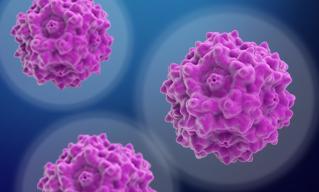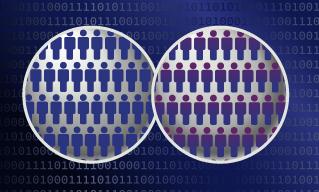
Dr. Rachel Salazar, PT, DPT, a senior director in Global Medical Affairs at Sarepta, met her first Duchenne muscular dystrophy patient when she was a student pursuing her Doctor of Physical Therapy. That early interaction planted a desire to support children and families impacted by neuromuscular disorders, and it fueled her interest in connecting the realities of patients’ lives with the measures used to track disease progression and treatment effectiveness.
“When working in a clinic, you get to know the patients and families and you learn about their day-to-day life,” she says. “When you’re evaluating a child, you want a tool that provides a realistic snapshot of how they move around in everyday life. But you also want a tool that can help you track changes – declines, stabilization or improvements – over time.”
Her fascination with such tools led Rachel to focus her career on the quantification of movement and the validation of functional assessment measures – scales that clinicians and researchers use to measure disease progression via functional abilities. She is a trained evaluator for the North Star Ambulatory Assessment (NSAA), a 17-item rating scale that evaluates if a child with Duchenne can perform a range of functions, such as walking, running, rising from a laying position and more.
Here, she explains how the NSAA provides an accurate picture of Duchenne status and why it’s often selected as an endpoint in research studies evaluating potential Duchenne treatments.
Q: What is the NSAA?
Rachel: The NSAA is a valid and reliable clinical outcome assessment developed specifically for boys with Duchenne.1-4 It is used to measure relevant gross motor abilities of children with Duchenne who are ambulant, or those who can walk. Because boys with Duchenne lose ambulation and functional skills due to progressive muscle loss, clinicians and researchers perform the NSAA to identify and address the needs of the child and track how he progresses over time.
The NSAA consists of a series of motor-skill exercises of increasing difficulty. Children are given a score for each of the 17 assessments, with 0 points given if the child can’t perform the exercise; 1 point if the child can perform it with assistance; and 2 points if he can perform it unassisted. All the scores are then added to determine an overall score. The higher the overall score, the better a patient’s functional performance.
Learn more about the NSAA in this fact sheet »
Q: Why does the NSAA focus on those 17 functions? Why is it important to observe changes in these abilities?
Rachel: A group of expert neuromuscular physical therapists developed the NSAA based specifically on the gross motor activities relevant to walking, and the specific skills that become more difficult overtime and are typically lost in children with Duchenne.1
When developing clinical outcome assessments, like the NSAA, the voice and needs of patients and families must be incorporated. You must understand what’s most meaningful to them. Can their child go from laying down to sitting up? That’s important when you want to get out of bed or sit up in bed. Can a child stand and walk on his own? That’s important if someone wants to be able to stand up to go to the bathroom on his own. Can he get in and out of a chair at school, or up or down a curb when out in the community? Those are important skills, and the NSAA gives us granularity into an individual’s ability to function in everyday life through activities that mimic real-life situations.
Q: Why do clinical trials studying potential treatments for Duchenne use NSAA as an endpoint?
Rachel: Clinical trials studying potential treatments are looking to see if the treatment works. The NSAA is used as an endpoint because it can detect changes in function and provide information about whether a child’s function is stabilizing or potentially even showing improvements on a potential treatment.3-4
It’s also important to note that the NSAA has been used with many Duchenne patients not participating in clinical trials. These boys’ scores help us understand the expected disease trajectory of Duchenne. When we compare the scores of Duchenne boys who are participating in trials with scores from these so-called natural history studies, we have a reliable comparison to show how a therapy may be impacting function and how it may be altering the expected trajectory of the disease.
Q: What do changes in the NSAA mean, in real terms, for boys impacted by Duchenne?
Rachel: Before talking about changes, it is important to understand that the natural trajectory of the NSAA in children with Duchenne is almost like the shape of a rainbow.5 Initially, young children with Duchenne gain new motor skills, as the rate of muscle weakness has not yet exceeded the rate of development. Young children with Duchenne gain about 3 points per year on the NSAA. Boys with Duchenne typically reach a peak score on their NSAA at 6.3 years old, and then enter a decline phase of 3 points per year where these skills are lost one by one until they lose the ability to walk.5
As such, a 3-point improvement over the course of one year in a 3-year-old could be attributed to the child’s typical development. However, if we look at a 9-year-old with Duchenne, no change or even a 1-point decline would be unexpected. (Remember, this child would typically already be in the steep decline phase of the disease and expected to be losing skills and declining 3 points per year.) In the case of our 9-year-old, a 1-point improvement likely means regaining a lost skill. And if the NSAA holds steady (rather than declining each year), he may be retaining abilities that he was expected to lose due to his disease.
In daily life, a 1-point improvement could mean that a boy is now able to step up a box-step by himself. When you take this out of the clinic and into real life, it may mean a boy with Duchenne can now walk across the street and step up the curb cut without holding on to their caregiver. Another example is the exercise that evaluates whether a child can stand up from a chair. If a 3rd grader can stand up from his chair in school by himself and walk around his classroom with his friends, then it provides him much more independence and reduces the reliance on a caregiver.
When you think about quality of life for the child and entire family, maintaining or regaining that 1-point can be very meaningful, and that is why NSAA is such a meaningful measure.
References
1. Scott, E et al. “Development of a functional assessment scale for ambulatory boys with Duchenne muscular dystrophy.” Physiotherapy research international : the journal for researchers and clinicians in physical therapy vol. 17,2 (2012): 101-9. doi:10.1002/pri.520
2. Mazzone, ES et al. “Reliability of the North Star Ambulatory Assessment in a multicentric setting.” Neuromuscular disorders: NMD vol. 19,7 (2009): 458-61. doi:10.1016/j.nmd.2009.06.368
3. Mayhew, AG et al. “Moving towards meaningful measurement: Rasch analysis of the North Star Ambulatory Assessment in Duchenne muscular dystrophy.” Developmental medicine and child neurology vol. 53,6 (2011): 535-42. doi:10.1111/j.1469-8749.2011.03939.x
4. Mayhew, AG et al. “Detecting meaningful change using the North Star Ambulatory Assessment in Duchenne muscular dystrophy.” Developmental medicine and child neurology vol. 55,11 (2013): 1046-52. doi:10.1111/dmcn.12220
5. Muntoni F. et al. (2019). Categorising trajectories and individual item changes of the North Star Ambulatory Assessment in patients with Duchenne muscular dystrophy. PLOS ONE, 14(9), e0221097. (Muntoni et al., PLoS one. 2019; 14(9): e0221097)



